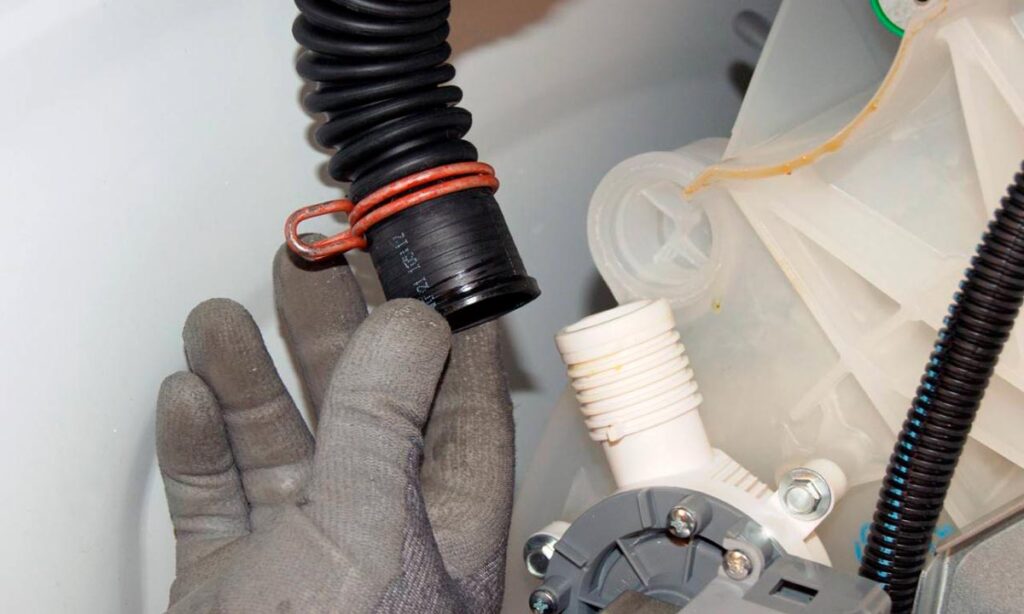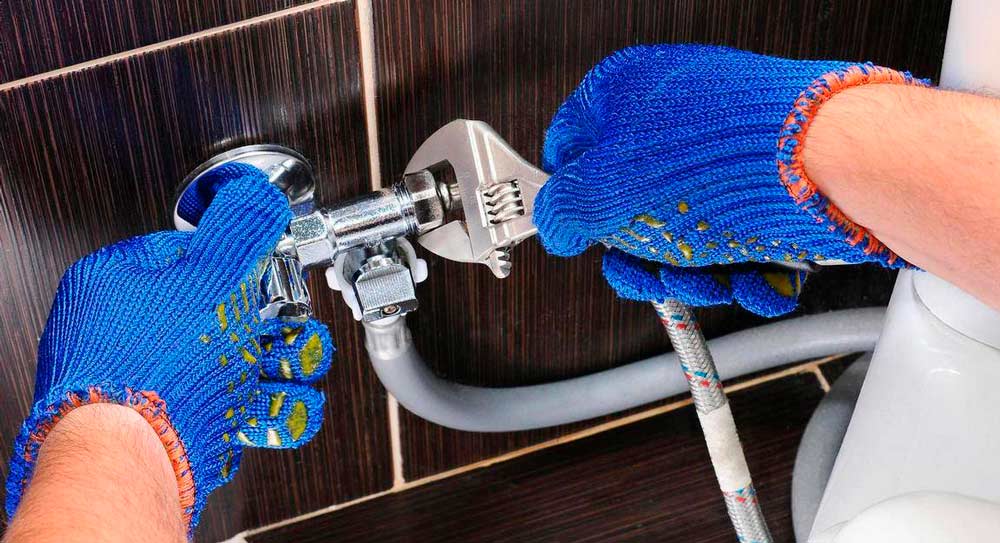
If there is a store near your home with components for the washing machine, then try to patch a torn drain hose is useless – it is more reliable to buy a whole. A new hose will be inexpensive and will save you the trouble of risking and wasting time. When there is no way to replace the ruined hose, act differently. Sometimes the only option is to temporarily seal the drain hose of the washing machine. Let’s figure out how to do it quickly and without unnecessary risks.
How to fix a hole in the hose reliably?
On the Internet “walks” a few ways to fix the drain hose of the washing machine, but not all of them in reality are reliable. So, often amateur masters advise a simple option – to seal the crack with duct tape. It is necessary to tape not only the breach itself, but also 4 inches on both sides of it, in several layers, without sparing the adhesive tape.

If you only cover the torn place on the hose with duct tape, then after a while the water will break through the “patch”, there will be a leak.
Whether the method with duct tape is reliable, it is difficult to judge: it all depends on the size of the crack, the quality of the tape and the efforts made. In any case, the masters-professionals offer a more durable option – with your own hands to fix a plastic tube in the torn hose. The instructions are as follows:
- Prepare two steel clamps and a tube (the latter should be 3 inches long and have a diameter commensurate with the existing drain hose);
- Locate the crack in the corrugation;
- Incise the hose at the damaged area, opening access to the “insides”, but not cutting it completely;
- Lubricate the prepared tube generously with sealant;
- Insert the tube first into one half of the corrugation and then into the other half (preferably the cut should go in the middle);
- Feel the hose and find both ends of the inserted tube;
- Secure the clamps to both ends of the tube over the hose.
If you fix a corrugated hose this way, the “patch” will last for several years. The water drained from the machine will pass through the tube, bypassing the torn area. This will prevent leaks. There is only one “minus” – the area between the clamps will not bend.
How to make a replacement?
Experts recommend using the hose repair as a temporary measure, and as soon as possible remove the old hose and install a new one in its place. Replacing the hose is a quick and easy procedure, especially if the washing machine has no tray.

You can’t put the washer down on its left side – water from the powder pail can get on the control board and ruin it!
The main thing is to act carefully and do not deviate from the instructions. The procedure is as follows:
- Prepare screwdrivers (slotted and cross), pliers, a container to collect water and a rag;
- De-energize the dispenser and disconnect it from the water supply;
- Drain the remaining water in the tank by unscrewing the garbage filter or by activating the emergency drain hose;
- Move the washing machine away from the wall for 1-1,5 meters;
- Cover the space around the body with a rag (dirty water will flow out during repair);
- Tilt the dispenser back so that the front legs are raised as high as possible (ideally, lower the washer to the right side);
- Find where the drain hose connects to the drain pump;
- Loosen the hose retaining clamp;
- Disconnect the hose from the snail;
- Pull the corrugator out of the housing;
- Take a new hose and pull it over the pump fitting;
- Tighten with a clamp;
- Fasten the hose to the housing;
- Return the washing machine to its original position.
The next step is definitely to check the quality of the repair. Connect the washing machine to the utilities, run the rinse program and wait for the drain. After that we check the corrugation and the bottom of the dispenser for dryness. If there are no drops and drips at the joints, then everything is done correctly.

